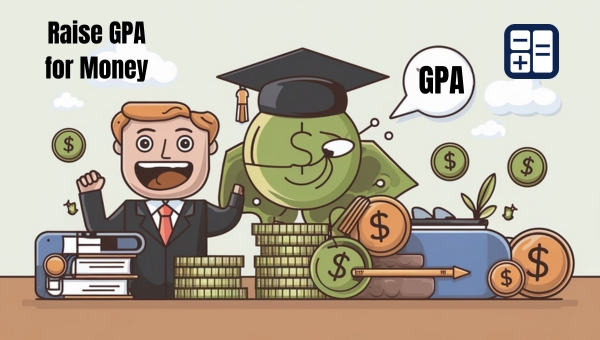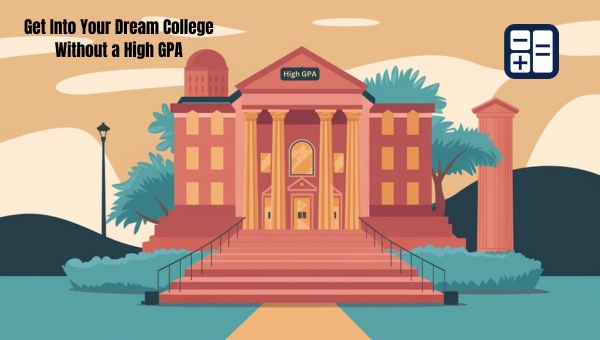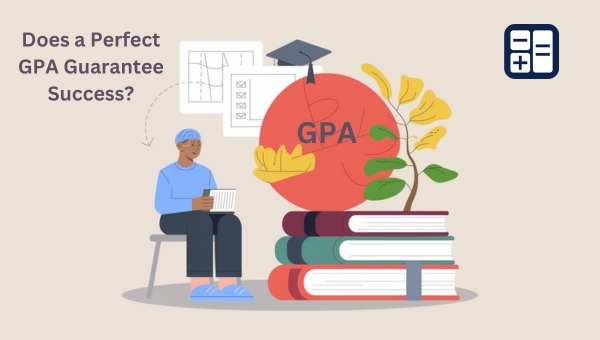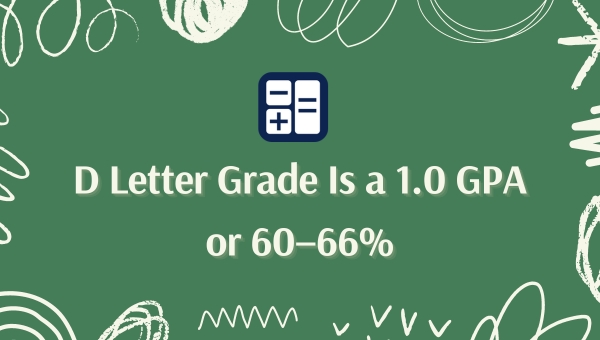2.0 GPA Is a C Letter Grade or 73–76%
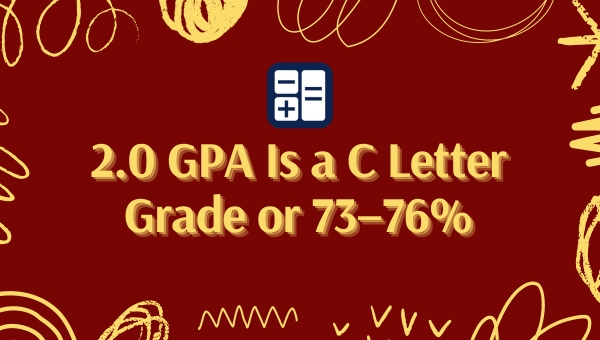
You might have heard that a 2.0 GPA translates to a “C” letter grade or 73-76%, but what does that really mean for your academic journey? Understanding this benchmark is crucial because it denotes you’re meeting basic expectations, yet it also suggests potential areas for improvement.
If you’re aiming for scholarships or competitive programs, a 2.0 GPA could be a limitation. So, what steps can you take to elevate your GPA and open more doors for your future? Let’s explore proven strategies that can help you boost your academic standing quickly and effectively.
What is a 2.0 GPA?
A 2.0 GPA, often referred to as a “C” average, represents a midpoint on the traditional 4.0 scale used by most educational institutions. This means that your grades are average, neither exceptionally good nor particularly poor.
To calculate your GPA, schools typically assign numerical values to letter grades (A=4, B=3, C=2, D=1, F=0) and then average them out.
Having a 2.0 GPA indicates that you’ve generally earned C’s in your classes. This is equivalent to scoring between 73% and 76% in your coursework.
You might find yourself in a position where you need to improve your grades to meet specific academic goals or requirements. It’s important to focus on time management, effective study habits, and seeking help when necessary to boost your GPA.
A 2.0 GPA might be sufficient for some purposes, but it can limit certain opportunities, such as eligibility for scholarships or admission to more competitive programs.
Knowing your GPA helps you gauge where you stand academically and what adjustments you might need to make to reach your educational objectives.
What does a 2.0 GPA mean for high school students?
A 2.0 GPA can significantly influence your college options by categorizing schools into safety, target, and dream schools.
With a 2.0 GPA, you’ll likely focus on safety schools where admission rates are higher, but that doesn’t mean you can’t aim for target schools with some effort.
Dream schools might be challenging, but understanding where you stand helps you plan better.
Safety Schools
Securing a 2.0 GPA in high school often means it’s time to consider safety schools as part of your college application strategy.
Safety schools are institutions where your academic credentials, including GPA, exceed the school’s average admission requirements. They provide a higher likelihood of acceptance, ensuring you’ve got a solid backup plan.
A 2.0 GPA translates to a C letter grade, which may limit your options for highly competitive schools. But don’t worry; there are still plenty of colleges and universities that will value your potential and provide opportunities for growth.
When building your list of safety schools, consider these factors:
- Acceptance Rates: Look for schools with higher acceptance rates to increase your chances of getting in.
- Support Services: Identify institutions that offer robust academic support services, like tutoring and counseling, to help you succeed.
- Programs and Majors: Ensure the safety schools have strong programs in your areas of interest, so you can pursue your passion.
- Campus Environment: Choose schools where you feel comfortable and can envision yourself thriving, academically and socially.
Selecting the right safety schools can give you peace of mind and keep your college dreams within reach.
Target Schools
Understanding what a 2.0 GPA means for high school students can help you shape a realistic and achievable college application strategy, especially when it comes to target schools.
A 2.0 GPA, equivalent to a C letter grade, indicates you’re meeting basic academic requirements but mightn’t stand out in a competitive pool.
However, this doesn’t mean you should lose hope. Target schools are those where your academic profile is a good fit, and you have a reasonable chance of acceptance.
To strengthen your applications to these target schools, consider the following:
- Extracurricular Activities: Showcase your involvement in clubs, sports, or community service to demonstrate a well-rounded profile.
- Personal Statement: Write a compelling narrative that highlights your strengths, experiences, and unique qualities. Make your story memorable.
- Recommendation Letters: Secure strong letters of recommendation from teachers or mentors who can vouch for your character and potential.
- Improving Grades: Focus on improving your GPA in your remaining high school years. Show upward trends in your academic performance.
Dream Schools
While targeting schools where you have a strong chance of acceptance is important, you might also have dream schools that seem out of reach with a 2.0 GPA.
It’s true that many prestigious universities have high academic standards, but don’t let a lower GPA completely dash your hopes. There are ways to bolster your application and still aim for those dream institutions.
First, consider highlighting other strengths in your application. Admissions committees look at a variety of factors beyond GPA, such as:
- Extracurricular Activities: Showcase your involvement in clubs, sports, or community service. Leadership roles can make a big impact.
- Personal Statement: Write a compelling essay that tells your unique story, explains any academic struggles, and shows your determination.
- Letters of Recommendation: Secure strong letters from teachers, coaches, or mentors who can attest to your character and potential.
- Standardized Test Scores: Strong SAT or ACT scores can sometimes balance out a lower GPA.
Additionally, consider starting at a community college. Many students transfer to their dream schools after proving themselves in a college setting.
Stay focused, work hard, and remember that persistence is key. Your dream school might still be within reach with the right strategy.
Proven Tips to Get a 2.0 GPA
If you’re aiming for a 2.0 GPA, start by setting realistic study goals and developing effective study habits.
Utilize campus resources like tutoring centers and prioritize your time management skills.
Don’t hesitate to seek academic assistance when you need it.
Set Realistic Study Goals
Setting realistic study goals can be your first step towards raising your GPA to a 2.0. Begin by assessing where you currently stand in each of your courses.
Identify the subjects where you need the most improvement and set specific, achievable targets. For example, aim to increase your grade in a challenging class by one letter grade over the next month.
Break down your larger goals into smaller, manageable tasks. If you need to boost your grade in math, set a goal to complete a certain number of practice problems each week. Track your progress and adjust your goals as needed to stay on course.
It’s crucial to prioritize your time effectively. Allocate more study hours to the subjects that require extra attention, but don’t neglect your stronger areas. Balancing your efforts will help maintain steady progress across all courses.
Remember to be realistic about what you can achieve within a given timeframe. Overloading yourself with too many goals can lead to burnout. Instead, focus on steady, incremental improvements.
Celebrate small victories along the way, as they contribute to your overall progress. By setting realistic study goals, you’ll create a clear path to raising your GPA to 2.0.
Develop Effective Study Habits
Developing effective study habits is your next crucial step in achieving a 2.0 GPA. Start by creating a dedicated study schedule. Allocate specific times for studying each subject, and stick to this routine. Consistency will help you retain information better.
Break down your study sessions into manageable chunks, like 25-30 minutes, followed by short breaks. This technique, known as the Pomodoro Technique, can enhance focus and reduce burnout.
Find a quiet, distraction-free study environment. Whether it’s your room, a library, or a quiet café, make sure the place is conducive to concentration. Keep all necessary materials—like textbooks, notes, and stationery—within reach to minimize interruptions.
Active learning is key. Instead of passively reading textbooks, engage with the material. Take notes in your own words, create mind maps, and quiz yourself on key concepts. Group study sessions can also be beneficial, as discussing topics with peers can deepen understanding.
Lastly, prioritize your health. Get sufficient sleep, eat nutritious meals, and exercise regularly. A healthy body supports a sharp mind, making your study sessions more effective. By integrating these habits, you’ll be well on your way to achieving that 2.0 GPA.
Utilize Campus Resources
Leveraging campus resources can significantly boost your chances of achieving a 2.0 GPA. Start by visiting the academic support center. They offer tutoring services in a variety of subjects, which can help clarify difficult concepts and improve your understanding. Don’t hesitate to ask for help; tutors are there to assist you.
Next, make use of the library. It’s not just for borrowing books; many libraries offer workshops on research skills, study techniques, and time management. These workshops can provide you with valuable strategies to enhance your academic performance.
Another useful resource is your professors’ office hours. Professors are usually more than willing to help clarify lecture material, discuss assignments, and provide guidance on how to improve your grades. Make an effort to attend these sessions regularly.
Additionally, think about joining or forming study groups. Collaborating with peers can offer new perspectives and help reinforce your understanding of the material. Group study sessions can also keep you motivated and accountable.
Prioritize Time Management
Effective time management is crucial for achieving a 2.0 GPA. You need to start by creating a consistent study schedule. Allocate specific times during the week for studying each subject.
Stick to this schedule as closely as possible to build a routine. Break down large tasks into smaller, manageable chunks to avoid feeling overwhelmed.
Use a planner or digital calendar to keep track of assignments, exams, and other important dates. This helps you stay organized and ensures you don’t miss any deadlines. Prioritize tasks based on their importance and deadlines. Tackling the most critical assignments first can relieve a lot of stress and prevent last-minute cramming.
Avoid procrastination by setting clear, achievable goals for each study session. Reward yourself with short breaks to stay motivated. Minimize distractions by choosing a quiet, dedicated study space. Turn off notifications on your phone or use apps designed to limit your screen time.
Balance your academic responsibilities with relaxation and social activities to avoid burnout. Make sure you’re getting enough sleep, eating well, and exercising regularly.
Seek Academic Assistance
Balancing your time efficiently sets a solid foundation, but sometimes you need a little extra help to achieve that 2.0 GPA. One of the best steps you can take is seeking academic assistance.
Don’t hesitate to visit your professors during their office hours. They can clarify confusing topics and provide insights on what’s crucial for exams and assignments.
Another valuable resource is tutoring services. Many schools offer free or low-cost tutoring. Tutors can help you understand complex material and develop effective study strategies.
If you’re struggling in specific subjects, like math or science, specialized tutors can make a significant difference.
Consider forming or joining a study group. Collaborating with peers allows you to share knowledge, ask questions, and reinforce your learning.
Group studies can also keep you motivated and accountable. Online resources are another great option. Websites like Khan Academy, Coursera, and even YouTube offer free tutorials on a wide range of subjects.
Use these platforms to supplement your learning and reinforce difficult concepts. Lastly, don’t ignore the importance of your school’s academic counseling services. They can help you plan your course load and manage your academic challenges effectively.
Seeking assistance isn’t a sign of weakness; it’s a smart strategy to boost your GPA.
How to Raise Your GPA Fast?
Boosting your GPA quickly requires a strategic approach and a commitment to making the necessary changes. Start by identifying the courses where you’re struggling the most.
Allocate more study time to these subjects and consider forming or joining study groups for better understanding. Utilize office hours to ask professors for clarification on topics you find challenging.
Stay organized by keeping a detailed calendar of all assignments, tests, and deadlines. Prioritize tasks based on their impact on your grade and tackle the most critical ones first. Don’t underestimate the power of good note-taking; review your notes regularly to reinforce learning.
Focus on improving your test-taking strategies. Practice past exams and quizzes, and time yourself to get better at managing exam pressure. If you have essays or projects, make sure to start early and seek feedback before final submission.
Lastly, consider dropping a course if it’s dragging your GPA down and it’s not essential for your degree. Instead, replace it with a class you’re confident you can excel in.
Conclusion
A 2.0 GPA means you’re meeting basic academic expectations, but there’s room for improvement. Don’t be discouraged; instead, focus on effective study strategies, seek help when needed, and stay organized.
Raising your GPA is possible with dedication and effort. Remember, enhancing your academic performance can open doors to more opportunities and set you up for future success. So, take action now and aim higher!
